
There are things we learn growing up, not because someone took the time to teach them to us, but because “that’s just the way we always did it.” It’s how things were done at home, so that’s what we do now as adults.
Nowhere does this scene play out more than in the kitchen.
Butter gets stored in that funny little drawer in the fridge door; cheese gets wrapped in plastic after it’s opened, and who put the empty milk jug back in the fridge door?
Now look, I’m not saying anything against your upbringing because we did this stuff at my home too. But what if I told you we’ve been storing food incorrectly our entire lives.
1. Butter
Can we all agree that toast is just a butter delivery mechanism? I love a good piece of toast with lots of melted butter. But there’s nothing more infuriating than trying to scrape cold butter over a piece of toast. (Unless it’s trying to put cold butter on bread.) The butter cools the toast too quickly and doesn’t melt, or you rip a hole in your toast, trying to smash the butter into submission.
It’s because we’ve been storing our butter wrong.
The best place to store butter is right on your kitchen counter. Yup, not in the fridge. The salt in salted butter preserves the butter from spoilage and inhibits bacteria growth. So, you can safely store your salted butter on the counter for weeks.
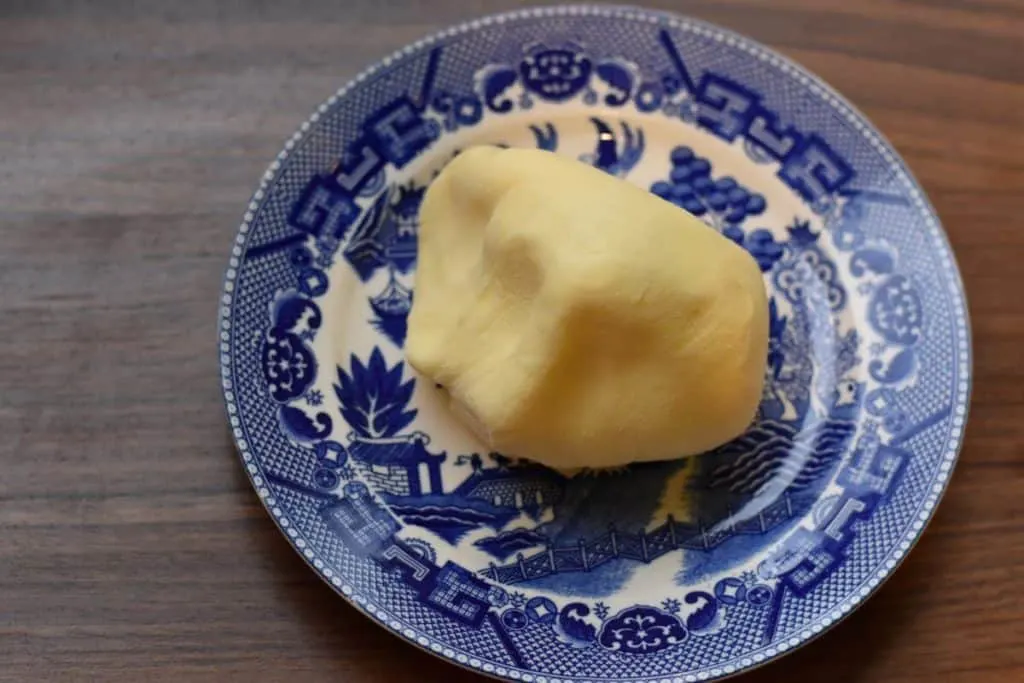
Pfft, who am I kidding? Like a stick of butter is going to last weeks in my kitchen. It’s more like days. Especially, when I make butter with my stand mixer.
Butter at room temperature tastes better as well. If you want spreadable butter with the best flavor, I suggest picking up a butter bell. The butter is stored in a little crock that is part of the lid, then inverted into the bottom part filled with water. The water keeps out air which can cause oxidation and off flavors.
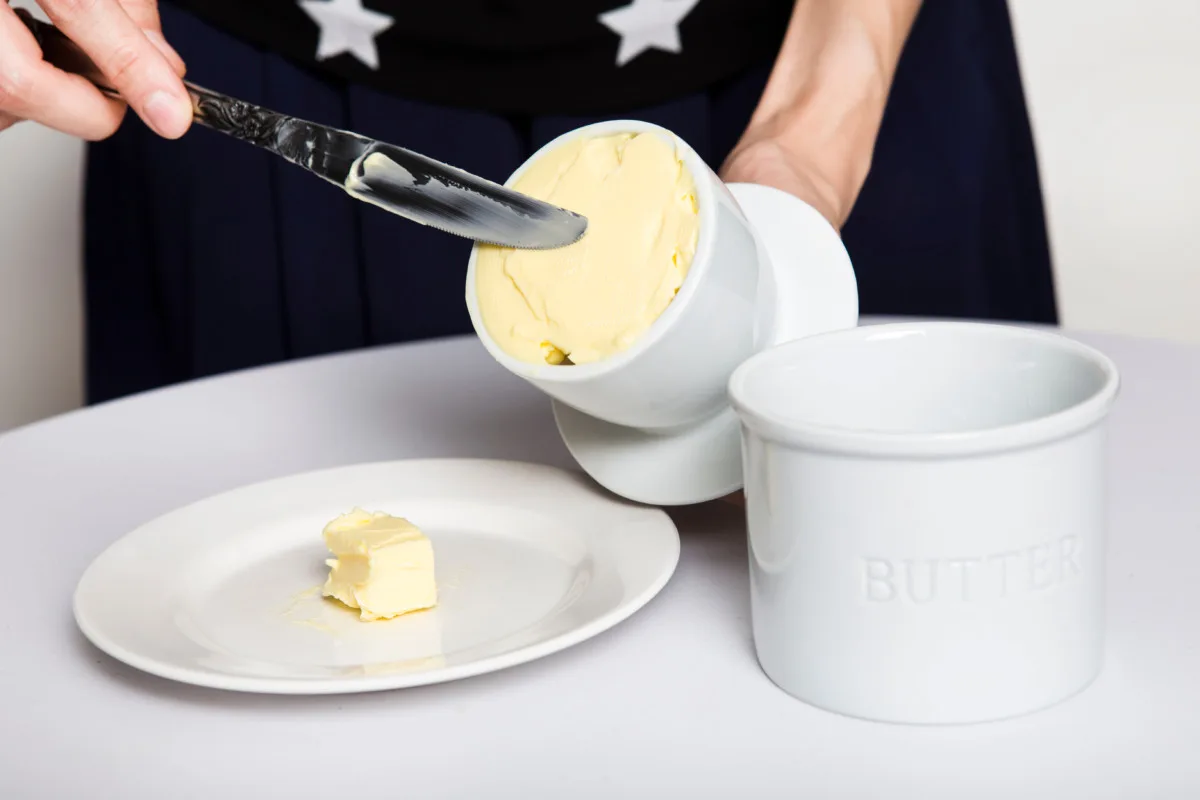
Unsalted butter, generally used for baking, should still be stored in the fridge. Without the salt, the fats will quickly go rancid.
2. Eggs
This one is tough.
How you store your eggs depends partly on where you live and where you get your eggs. Many Americans are shocked to learn that eggs aren’t refrigerated in the UK (and most of Europe). You buy them off the shelf in the supermarket, like a bag of flour or a box of pasta, and when you get home…they go on the counter or in the pantry, where they will last for a few weeks.
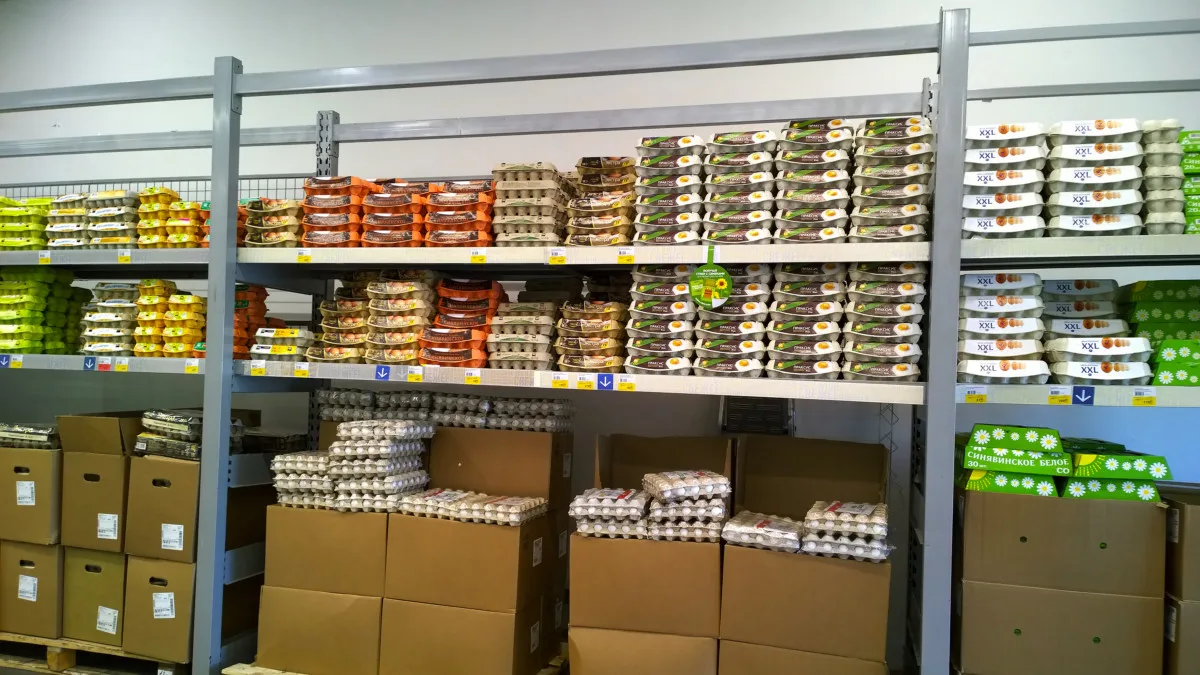
I can hear the gasps now, “But salmonella!” and “Don’t they get sick?”
Well, no, I’m pretty sure it would be in the news if an entire continent kept getting sick from eating spoiled eggs. And salmonella isn’t an issue because they vaccinate their poultry against it in the UK.
Wait? You mean there’s a vaccine that will prevent salmonella in chicken, and we haven’t adopted it here in the US?
Yup. It’s been around since the 90s.
(Yeah, I’m not going to touch that one.)
With the salmonella issue taken care of, that leaves spoilage. I mean, don’t eggs have to be refrigerated, so they don’t go bad?
No.
Unwashed, unrefrigerated eggs do not require refrigeration.
This is because of what’s known among chicken owners as “the bloom.” The final layer in a developing egg is a special protein coating that seals the entire egg, preventing bacteria and gasses from getting in or out of the egg. This way, the yolk inside stays fresh and uncontaminated to nourish the developing chick. Or, if the egg is unfertilized, it means it is shelf-stable without refrigeration for weeks.
Once the egg is washed or refrigerated, the bloom is destroyed, and the egg’s pores will allow bacteria and oxygen to penetrate the shell, requiring refrigeration.
Wait, so you’re telling me we have an easy way of storing eggs, just as they are, for a couple of weeks to a month, with no electricity or refrigerated trucks, which would also reduce the carbon footprint for shipping and storing them, but we don’t do it here in the US? Why?
Because the FDA requires that all commercially produced eggs be refrigerated to protect against salmonella.
Yup. So, there’s that fun bit of irony.
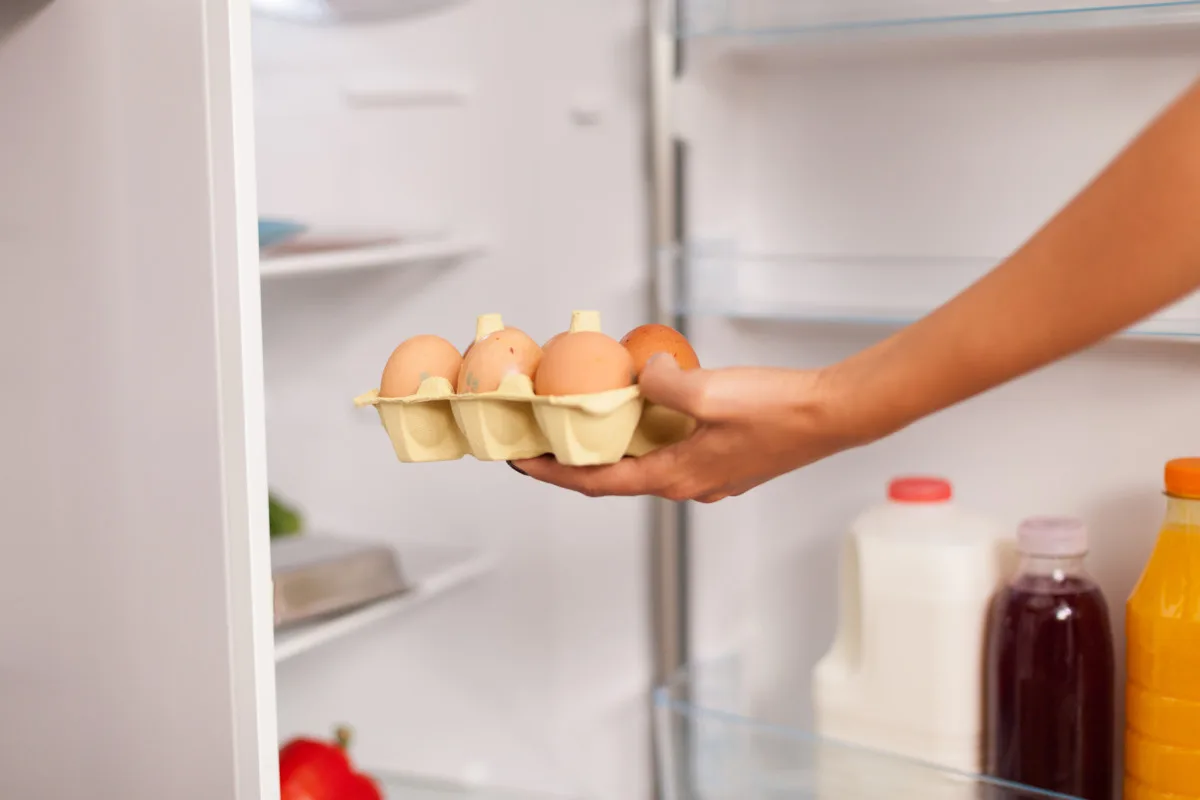
If you buy your eggs at the store or have been previously refrigerated, they must continue to be stored in the fridge. However, if you buy your eggs from a farmer’s market or a friend with chickens, ask them if the eggs have been washed or refrigerated. If not, you can store them on your counter.
Or better yet, start your own small backyard flock and enjoy the freshest eggs you’ve ever tasted that require no refrigeration.
3. Cheese
I love cheese, and judging by the ever-increasing cheese selection in supermarkets these days, you do too. I can’t control myself when I hit the cheese counter. Ooh, that looks good, and I’ll take a couple of ounces of that too, and I think I polished off the Stilton last night.
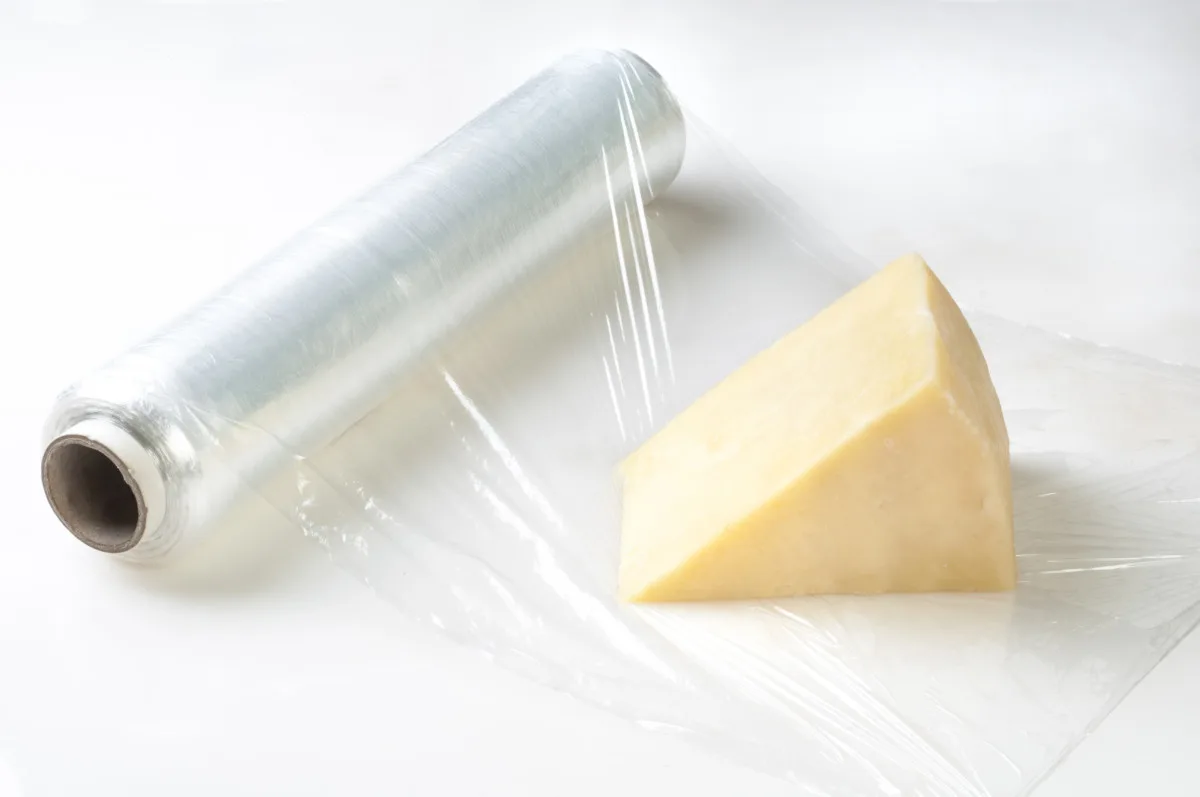
The cheese we buy comes wrapped in plastic, and we bring it home and toss it in the fridge. We transfer it to more plastic wrap or a Ziploc baggie when we open it.
But if you’re spending the money on decent cheese, you owe it to yourself to store it properly.
You’ll end up with less food waste and more flavorful cheese.
Good cheese is a living organism; like most living organisms, it needs to breathe. So plastic is a no-go for keeping cheese at its best. This is good news if you want to reduce plastic in the kitchen.
To store cheese, opt for parchment or freezer paper.
I prefer to buy parchment sheets rather than rolls as it’s much easier to work with. Placing your unwrapped cheese in the center of your paper, wrap it up tightly, much like you would wrap a present. Then secure the paper with painter’s tape. You may need to wrap the tape around the cheese and stick it to itself. Nearly all other tape will not stick to parchment paper. Label your tape with the date and type of cheese.
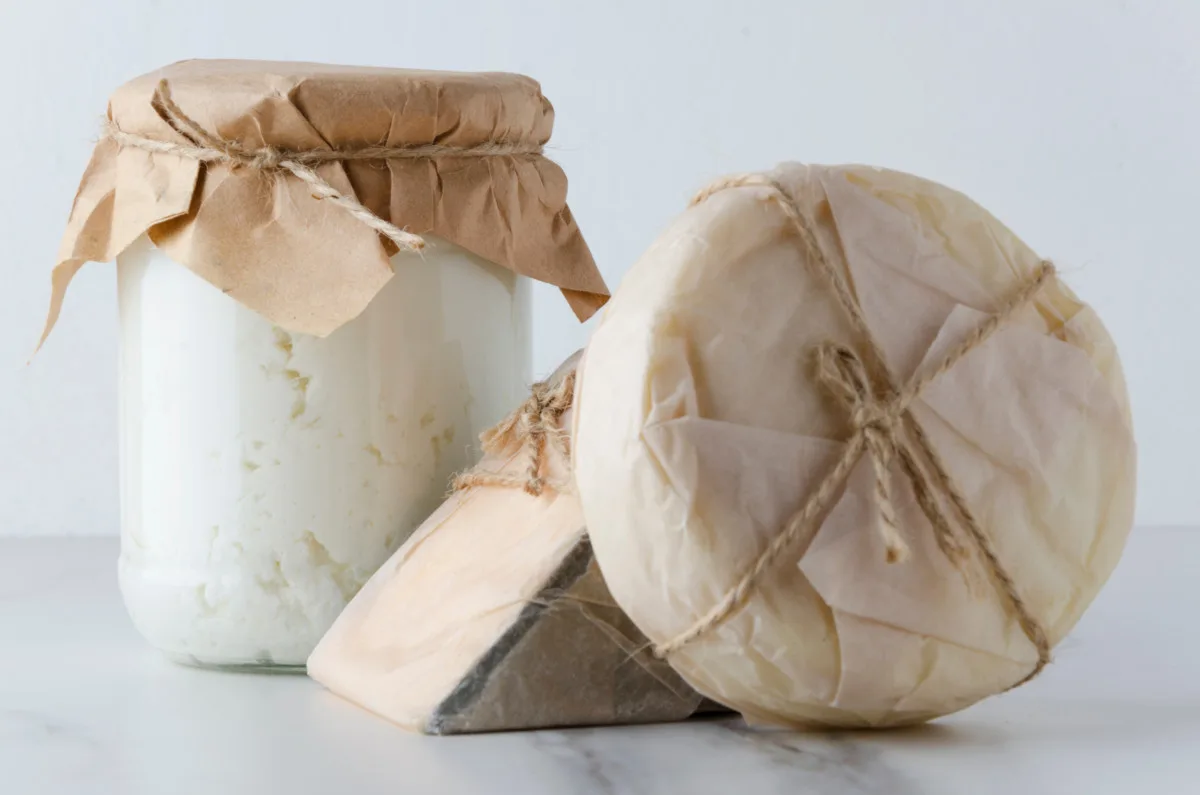
If you have a drawer in your fridge for cheese, keep your paper-wrapped treasures there. If not, you can pick up a container with a lid to store the cheese, but don’t seal the lid, just set it on top.
We all know cheese can be rather pungent, so to prevent other foods from smelling like cheese, you can put a small baby food jar full of baking soda in the drawer and refresh it with new baking soda monthly.
Trust me, it might seem like extra work, but it’s worth it. You’ll be amazed at the improved flavor of your cheese. Let your cheese come to room temperature for the best flavor before enjoying it.
4. Tomatoes
This one is pretty simple. Don’t put your tomatoes in the fridge. Unless you hate tomatoes, then, by all means, put them in the fridge.
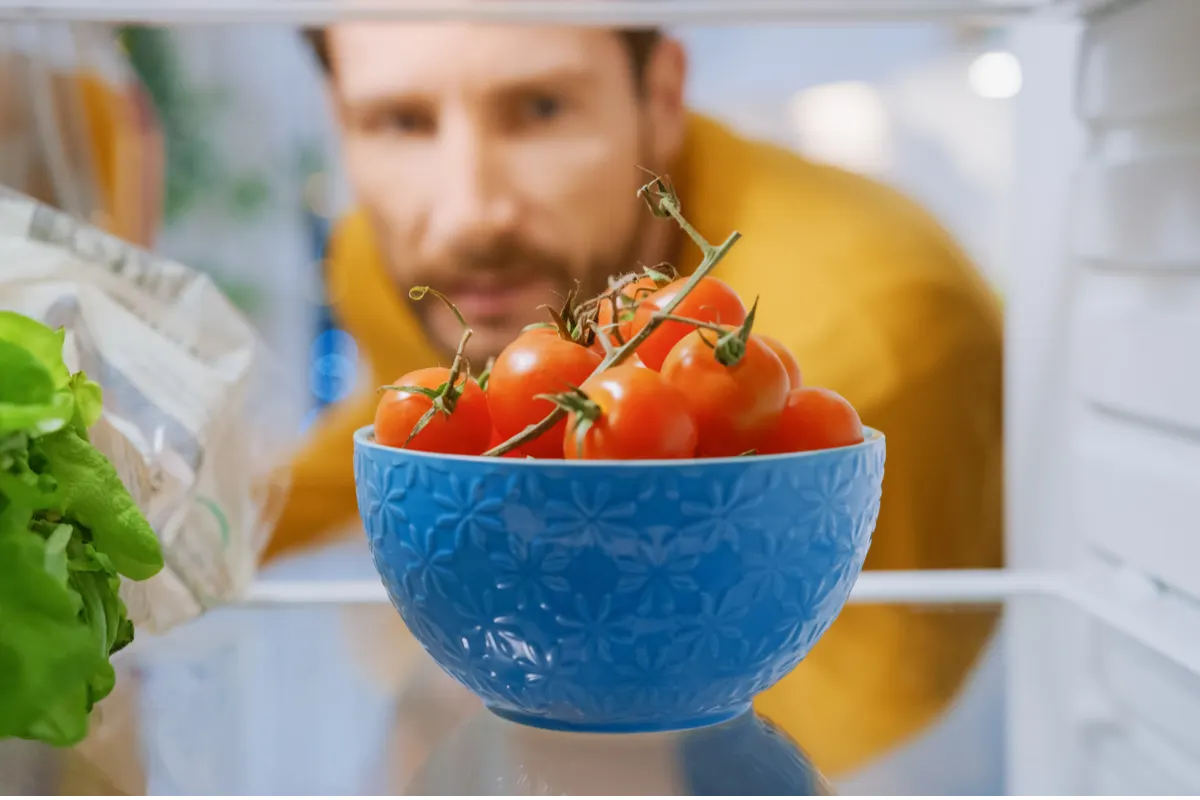
Tomatoes don’t play well with the cold.
As gardeners, we know this, so I’m always baffled by folks who put their homegrown tomatoes in the fridge. Tomatoes contain natural enzymes that are cold-sensitive. Some of these enzymes will start to break down the cell walls of the tomatoes (Frost damage, anyone?), causing that gross mealy texture we all know and loathe.
But more importantly, tomatoes stored below 54F will stop producing the enzymes that give them their quintessential tomato flavor. By storing your tomatoes in the fridge, you’re ensuring they will be tasteless.
The best reason to skip the fridge is that tomatoes will continue to ripen on the counter. If you end up with a tomato that’s a little underripe, it will taste fine after a couple of days on the counter.
5. Nuts
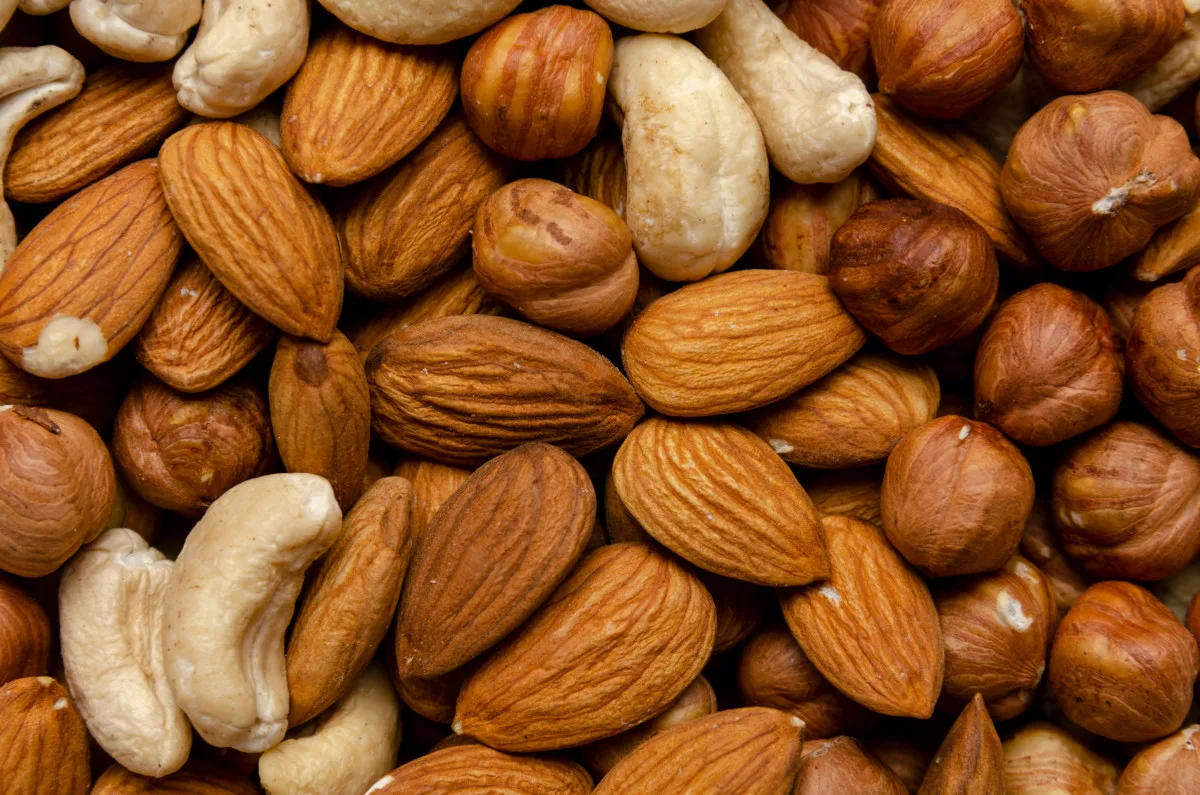
Store my almonds in the pantry; are you nuts?
Sorry, I couldn’t help myself.
But seriously, this is one of those situations where the item in question should be stored in the fridge, but most of us rarely do. Most of us don’t give too much thought to how we store nuts.
Once you store nuts correctly, though, you’ll wonder how you stomached those gross rancid pellets you used to eat. That’s because much of the flavor in nuts come from their oils.
The natural oils in nuts are highly volatile and begin to degrade even at room temperature.
To ensure you’re eating the best tasting almonds, pecans, walnuts, peanuts, etc., keep your nuts in a tightly sealed, airtight container in the fridge.
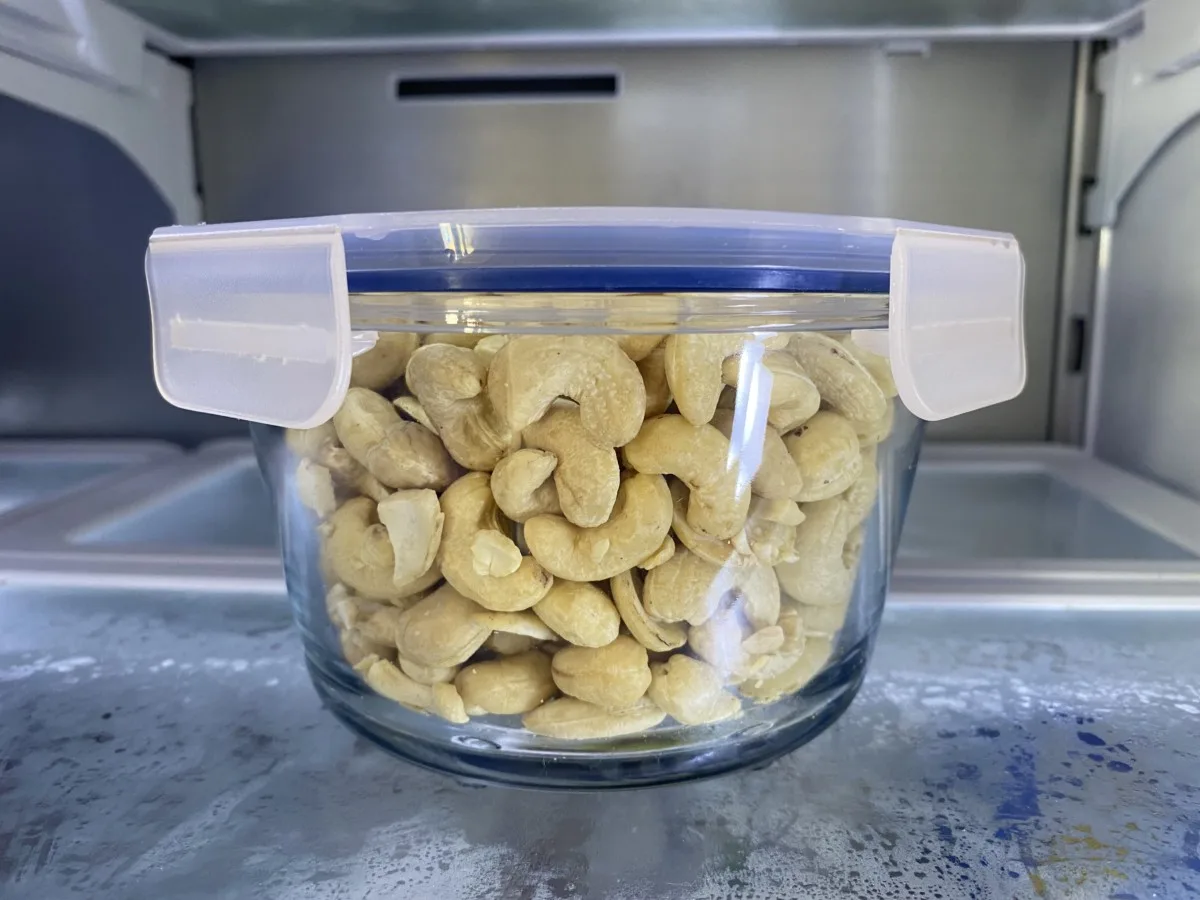
For the best flavor, let them come up to temperature before you eat them. (You know, set them next to the cheese you’re waiting on.) You’ll be amazed at the improvement in their flavor.
6. Raw Meat
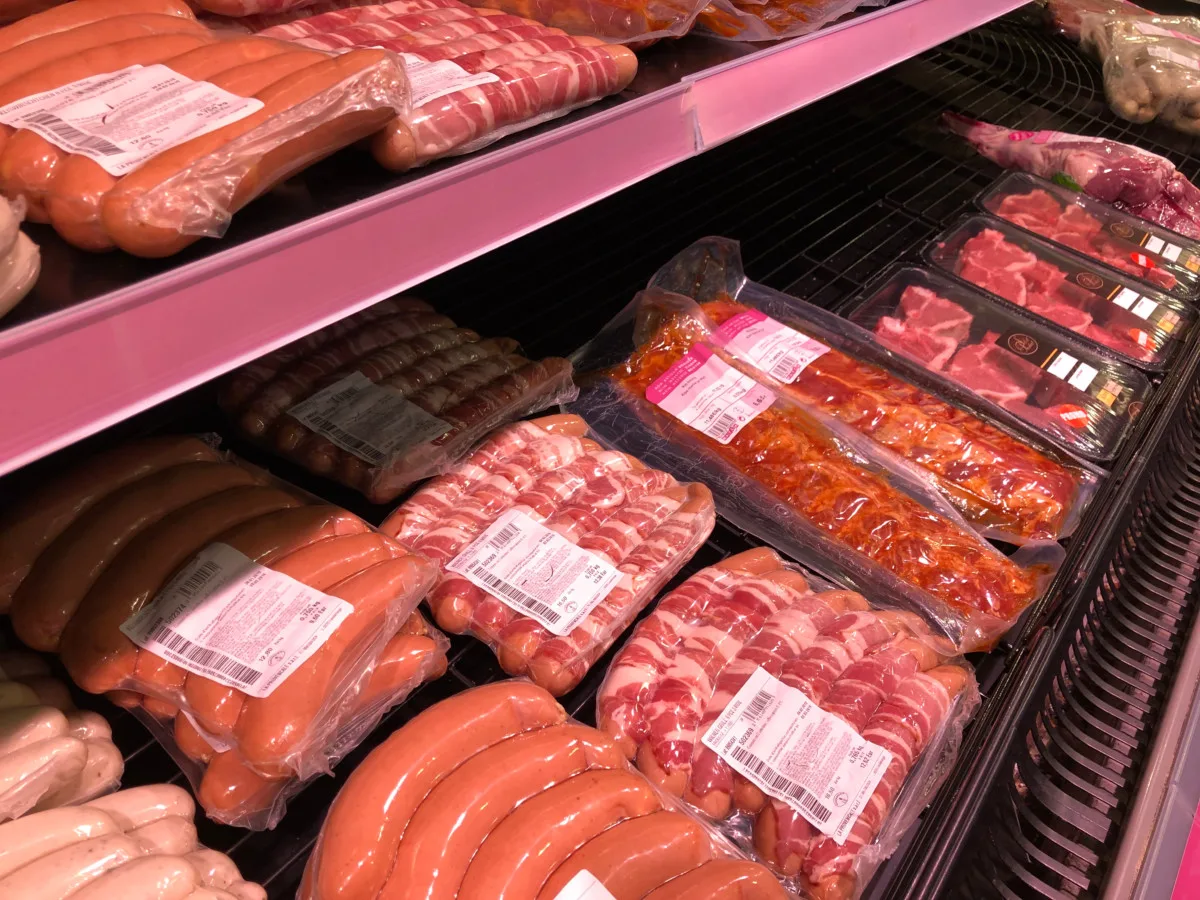
Why do we always seem to be in a rush when we get back from grocery shopping? Things get pitched in the refrigerator wherever there is a spare bit of space because we’ve got to get dinner on the table or the kids have some activity to go to.
However, some care should be taken when storing meat in the fridge.
If you’re anything like me, you pull the meat out of your grocery bag, stuff it in the fridge, and forget about it.
In doing so, you’ve probably cleaned up plenty of gross spills and drips from doing this, also like me.
If you won’t be using the meat right away, the freezer is the best option to store meat. Most packaged meat will give you a date to use it or freeze it by, but ideally, that decision should be made as soon as you bring it home. If you aren’t using your meat within a few days, put it in the freezer.
A better way to store meat in the refrigerator is to have a storage bin on one of the shelves you can put your meat in. This way, if the packaging leaks, other food won’t be contaminated, and you have only one container that needs washing. If you want to get fancy, you can have separate containers for each type of meat: beef, chicken, and pork.
7. Milk
Aren’t those little shelves inside the door of your refrigerator great? There’s no digging through nearly empty bottles of mustard and moving last night’s leftovers to get to the milk. You open the door, and there it is.
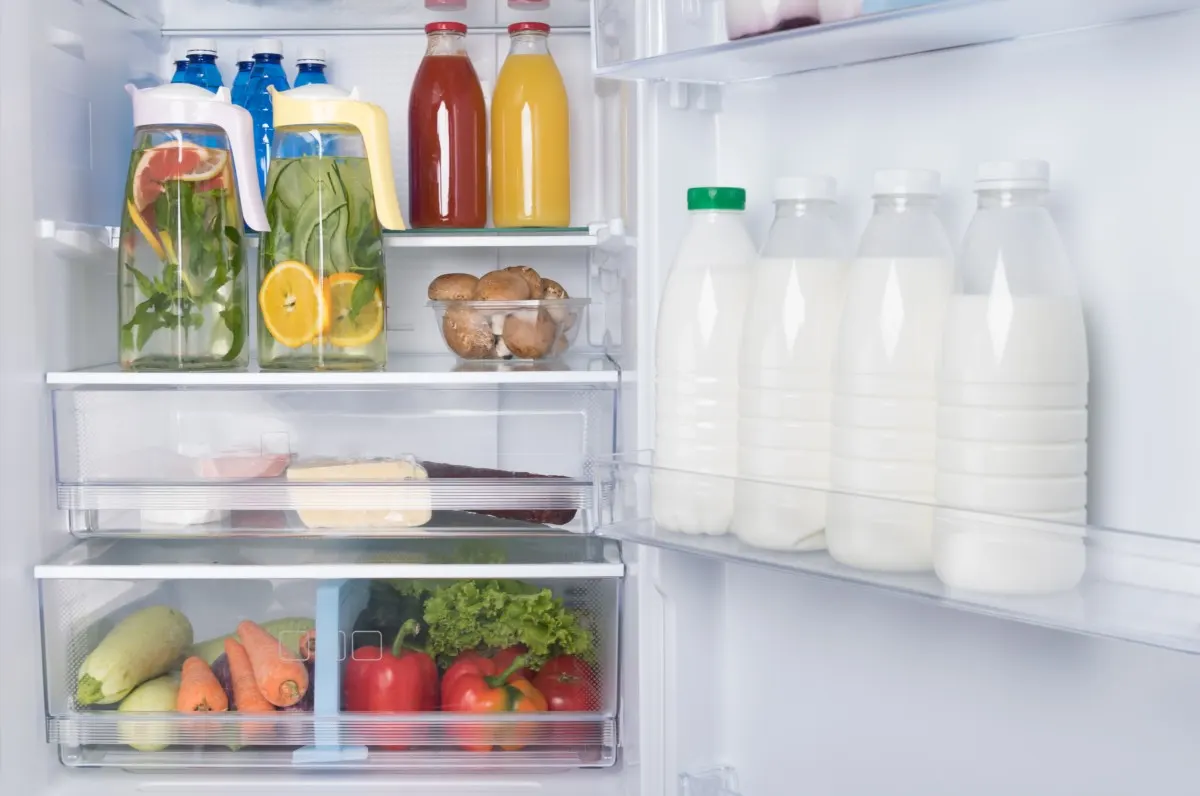
Unfortunately, those shelves are the worst place in your fridge to store milk. You expose the milk to light and warm air whenever you open your fridge. This repeated exposure to warm air can significantly decrease the shelf life of fresh milk.
The best place to store milk is toward the back of the fridge, where it’s coldest. If your family goes through milk quickly, this is less of an issue. But if a container of milk lasts you more than a week, you should consider moving it to the lowest shelf and storing it towards the back.
This is easier to do than you think. Instead of purchasing milk in plastic jugs, opt for milk sold in cartons. Most of these have a small twist-off cap at the top of the container, meaning you can easily store your opened milk carton on its side, lengthwise.
For a few reasons, buying milk in cartons is better than plastic jugs.
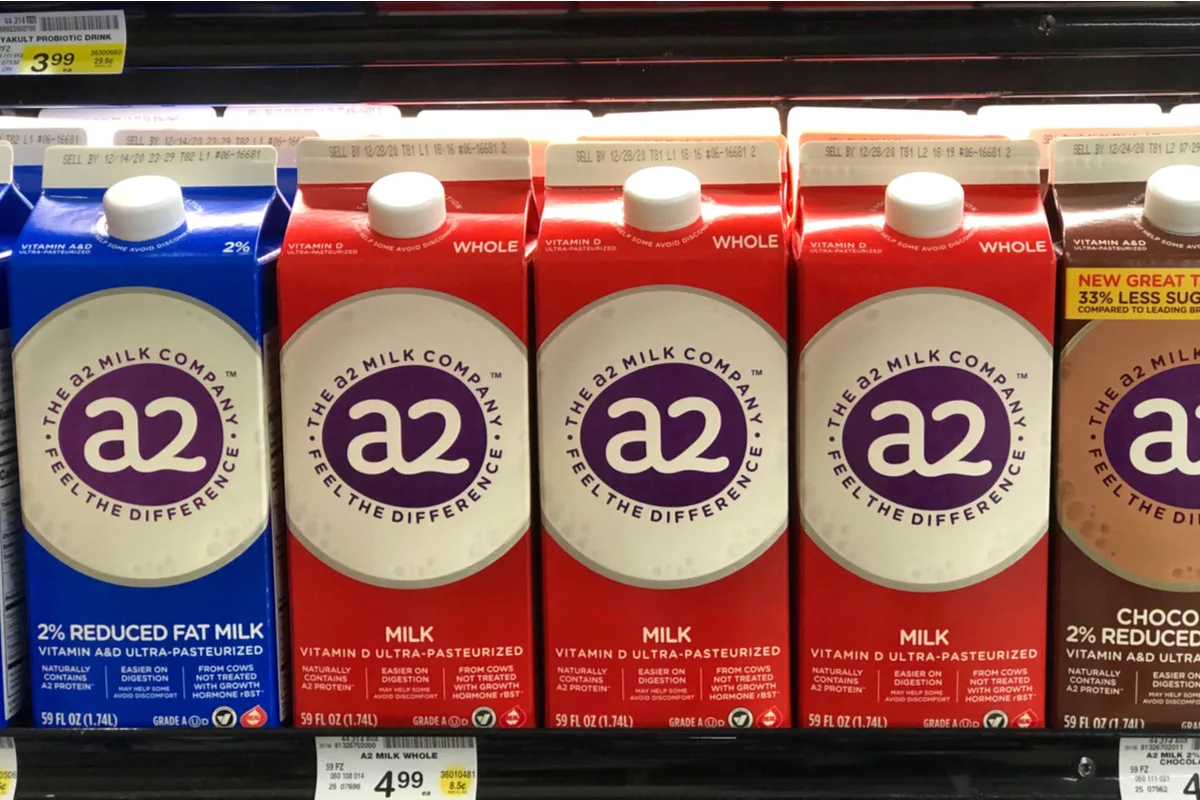
The obvious reason is plastic waste. Even in an area where recycling is an option, we’re learning that most plastic doesn’t end up getting recycled.
Milk is best stored in a container that doesn’t let iin light, such as a paper carton. Light also contributes to spoilage and a loss of flavor.
And finally, even if you have a large family that goes through lots of milk each week, purchasing milk in quart-sized cartons instead of gallon jugs means fresher tasting milk and easier storage – quart-sized cartons are stackable!
Now that you’re wiser (we’ll skip the older part, it didn’t take that long to read this article), go forth and enjoy better tasting food and more room in the refrigerator.

Get the famous Rural Sprout newsletter delivered to your inbox.
Including Sunday ramblings from our editor, Tracey, as well as “What’s Up Wednesday” our roundup of what’s in season and new article updates and alerts.

